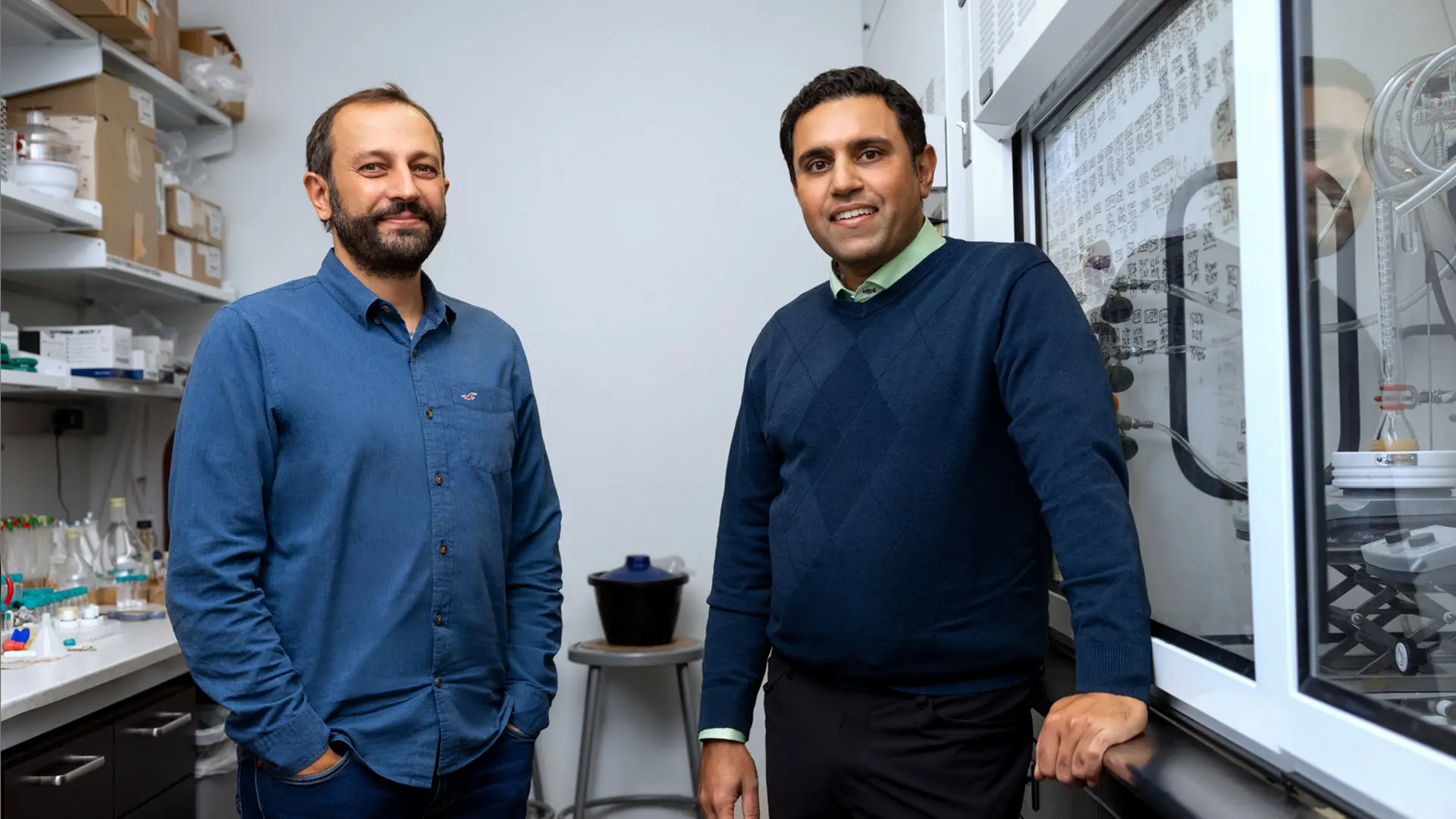
Ernesto Guccione, PhD, left, and Arvin Dar, PhD
Kinases play central roles in most cancer networks and many make excellent therapeutic targets for hepatocellular carcinoma (HCC), the fourth leading cause of cancer-related deaths globally. But the limited effects of current kinase inhibitors to treat patients with HCC reveal the weakness of any research strategy that is focused on kinases alone.
Investigators at The Tisch Cancer Institute—under the leadership of Ernesto Guccione, PhD, and Arvin Dar, PhD, both Professors of Oncological Sciences and Pharmaceutical Sciences—are taking a much broader approach. They are exploring highly targeted compound libraries that include kinase inhibitors, as well as histone modifying enzymes and other small molecules used in combination with novel animal and organoid models that are genetically representative of the majority of HCC patients.
“Our approach is to identify novel and highly effective lead compounds by starting with a known library of FDA [U.S. Food and Drug Administration]-approved drugs for liver cancer on a unique 3D organoid platform and following up with mechanistic studies,” says Dr. Guccione, whose lab focuses on the mechanisms of transcriptional and post-transcriptional regulation to identify therapeutic opportunities. “In this way, we believe we can uncover basic insights into the unique signaling mechanisms of HCC, as well as distinct driver mutations. Another advantage of this approach is that it can be applied over and over to different subtypes of
cancer.”
In a disease such as liver cancer, where immunotherapy is effective in only 20 percent of patients, the opportunities for clinical improvement are vast.
- Ernesto Guccione, PhD
One of the subtypes his lab has focused on is mutant β-catenin, a dual-function protein involved in cell-cell adhesion and gene transcription, which accounts for one-third of all liver cancers and is known to be refractory to immunotherapy.
Through previous research, the Guccione and Dar labs identified and further validated a lead compound, WNTinib, which has shown strong tumor-specific growth inhibition in human and murine HCC models possessing the CTNNB1 gene, which encodes mutant β-catenin. “We’re very excited about this lead compound because it seems very robust and ready for clinical studies,” says Dr. Guccione.
A new grant from the National Cancer Institute has allowed Dr. Guccione and Dr. Dar to expand this work and form a collaboration with other Tisch Cancer Institute labs, including that of Amaia Lujambio, PhD, Associate Professor of Oncological Sciences, and Medicine (Liver Disease).
Together, the investigators are working to uncover lead compounds beyond WNTinib by using a proprietary library created in the Dar lab that consists of FDA-approved drugs. This
“optimized” library is expected to significantly accelerate the screening process in their search for ideal compounds that inhibit multiple kinase targets.
WNTinib
A lead compound ready for clinical studies
In addition to being able to validate critical HCC targets and pathways, the collaboration
will produce data that is scalable and helpful in identifying targeted therapies for other cancers, such as colorectal cancer.
In a disease such as liver cancer, where immunotherapy is effective in only 20 percent of patients, the opportunities for clinical improvement are vast, according to Dr. Guccione. “We still need to figure out the specific pathways that convey resistance to immunotherapy,” he says. “But we believe that by optimizing compounds that are better matched to the complexities of hepatocellular carcinoma we’re on track to develop a therapeutic—possibly in combination with immunotherapy—that will benefit a significantly larger patient population.”
